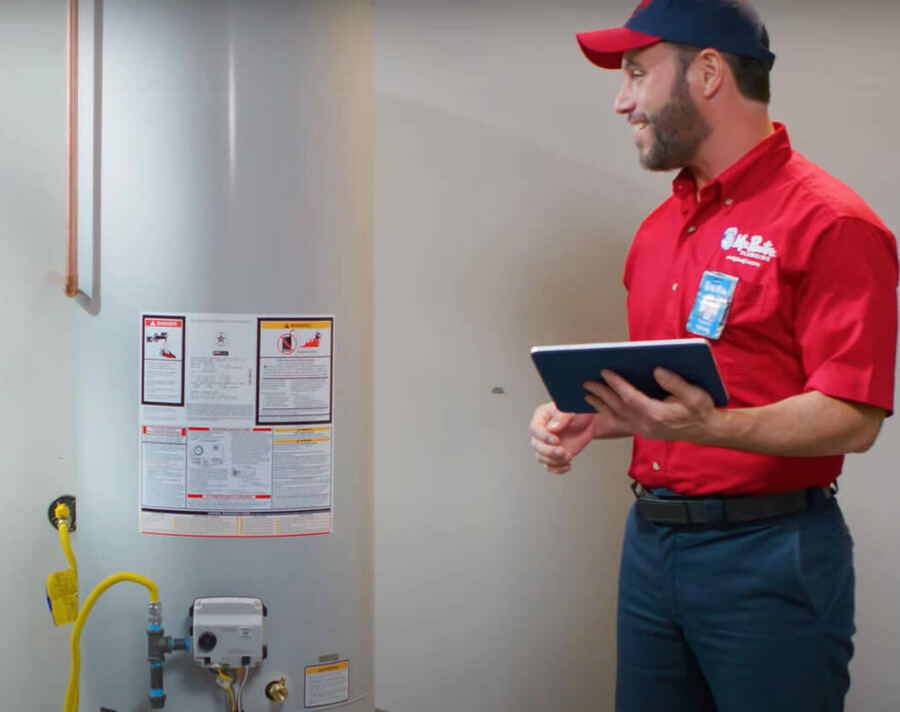Schedule a Plumber This Sunday to Get 50$ OFF
Schedule a Plumber This Sunday to Get 50$ OFF

A water heater is one of the most essential appliances in your home. It provides hot water for your daily needs, whether for showering, cleaning dishes, or laundry. However, there are times when the water heater's pilot light goes out, and knowing how to relight it can save you time and money. While sometimes it’s necessary to call a plumber, you might be able to fix this issue independently. Mr. Rooter Plumbing walks through how to reignite your water heater’s pilot light safely and effectively.
Before diving into how to reignite your pilot light, it's essential to understand what it is. The pilot light is a small flame inside your water heater that ignites the gas burner when needed. Without the pilot light, your water heater won’t be able to heat the water.
If your water isn't heating up properly, or you notice that the water is lukewarm, there’s a chance the pilot light has gone out.
There are several reasons why the pilot light on your water heater may go out:
If the issue is more severe or you’re unsure, contacting a plumbing service to inspect your water heater is always a good idea. Sometimes, you might need a water heater replacement, especially if your system is old.
Before attempting to relight the pilot light, make sure you take a few safety precautions:
Once the area is safe, you can continue reigniting the pilot light.
Here’s a step-by-step guide to relighting the pilot light on your water heater:
Most water heaters have a small door or panel at the bottom where the pilot light and burner assembly are located. You may need to remove a small access panel to reach it.
Find the gas control knob on your water heater and turn it to the “Pilot” position. This is usually marked on the control knob, and it's an important step to avoid flooding the area with gas.
You’ll notice a button or knob labeled “Reset” or “Pilot” near the gas valve. Press and hold this button. This will allow gas to flow to the pilot light, but it won’t ignite yet.
While holding the reset button, use a long lighter or match to ignite the pilot light. You should see a small flame appear. Hold the button for 30-60 seconds to keep the pilot light lit.
After holding the reset button for the recommended time, release it. The pilot light should remain lit. If it goes out immediately, there could be an issue with the thermocouple or the gas supply, and you may need to call a plumbing repair service for help.
Once you’re sure the pilot light is stable, turn the gas control knob from “Pilot” to the “On” position. Your water heater should now be ready to heat the water again.
While many homeowners can reignite the pilot light themselves, there are situations where it’s better to call a professional plumber. If the pilot light doesn’t stay lit, the thermocouple might need to be cleaned or replaced, which requires a plumbing repair service. In other cases, the problem may be a gas leak or a malfunctioning gas valve, requiring expert attention.
If your water heater is older and has frequent issues, consider replacement. Tankless water heater installation is another great option for homeowners looking for a more energy-efficient option. A plumber can help you determine the best choice for your home.
Here are a few tips to help prevent your pilot light from going out in the future:
Reigniting the pilot light on your water heater is often simple and can be done safely by following the steps above. However, if you’re unsure or uncomfortable, don’t hesitate to call a plumbing repair service. Regular maintenance and timely repairs can help prevent more significant issues and keep your water heater running smoothly for years.
A garbage disposal is one of the most convenient tools in the entire modern home. Unfortunately, most homeowners misuse the disposal as a way to get rid of organic waste.…
If you’ve been dealing with faucet leaks for some time and plumbers in Killeen, TX mentioned that faucet repair was not possible, you might find yourself standing in…
Most homeowners don’t think about the importance of a shower until they face a problem with it. A minor problem in the shower can quickly escalate into a major headache.…